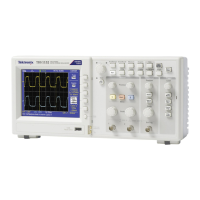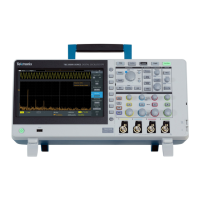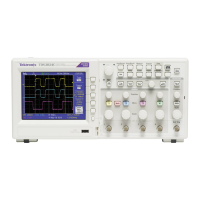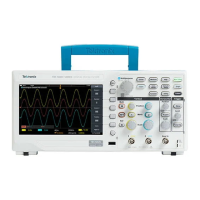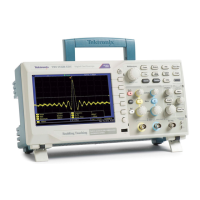Do you have a question about the Tektronix TB1052B-EDU and is the answer not in the manual?
| Brand | Tektronix |
|---|---|
| Model | TB1052B-EDU |
| Category | Test Equipment |
| Language | English |
Precautions to avoid injury and product damage, including compliance with codes.
Guidelines on using proper power cords and ensuring product grounding for electrical safety.
Instructions on power disconnect accessibility and proper probe/test lead connection.
Warnings about probe ratings, finger guards, and high voltage awareness.
Information for qualified personnel performing service, focusing on shock avoidance.
Explains the meaning of WARNING and CAUTION statements in the manual.
Defines markings indicating hazards and instructions for consulting the manual.
Details electromagnetic compatibility standards and European contact information.
Lists EU directives and European standards for electrical equipment safety.
Guidelines for equipment recycling and WEEE directive compliance.
Table listing models, bandwidth, sample rate, and display type.
Details AC voltage and frequency requirements for the power source.
Step-by-step guide to verify the oscilloscope's operation.
Warnings and guidelines for safe probe usage, including finger guards.
Procedure to manually adjust probe compensation for accurate measurements.
How to select the correct attenuation factor for the connected probe.
Details on what information is displayed on the oscilloscope screen.
Explanation of vertical controls for positioning and scaling waveforms.
Explanation of horizontal controls for position, acquisition modes, and scale.
Overview of trigger controls including menu, level, and force trigger functions.
Explains essential setup functions like Autoset and Autorange.
Explains the role of triggering in waveform acquisition and display.
Explains signal digitization and acquisition modes.
How to adjust waveform scale and position for better viewing.
Methods for measuring waveforms using graticule, cursors, or automatic measurements.
Guide to quickly displaying and measuring signal amplitude and frequency.
Measuring timing between signals, e.g., chip-select and data output.
Setting up the oscilloscope to trigger on pulse width aberrations.
How to record data from a source over time to a USB memory device.
Using limit tests to monitor signals against templates and output Pass/Fail results.
How to set acquisition parameters like Sample, Peak Detect, and Average.
How Autorange automatically adjusts settings to track signals.
How Autoset adjusts controls for a usable signal display.
How to display and use measurement cursors and the Cursor Menu.
Overview of defining triggers via menu and front-panel controls.
How to display the Utility Menu.
Table detailing model overview, bandwidth, channels, sample rate, and record length.
Specifications for Peak Detect, Sample, Average, Single Sequence, and Roll acquisition modes.
Specifications for external trigger, trigger modes, types, source, view, and frequency readout.
How to physically connect the probes to the oscilloscope channels.
Procedure to adjust probe low-frequency compensation for accurate measurements.
General safety precautions for probe use, including fire/shock hazards.
Details of standard accessories included with the oscilloscope and probes.
Lists optional accessories available for purchase.
Precautions regarding storage and exposure to sunlight.
Steps for cleaning the oscilloscope exterior using soft cloths and isopropyl alcohol.
Table listing default settings for Acquire, Autorange, Cursor, Display, FFT, Horizontal, Math, Measure, Trigger.
List of settings that are not affected by the Default Setup button.
Terms regarding redistribution, modification, and warranty disclaimer for fonts.

